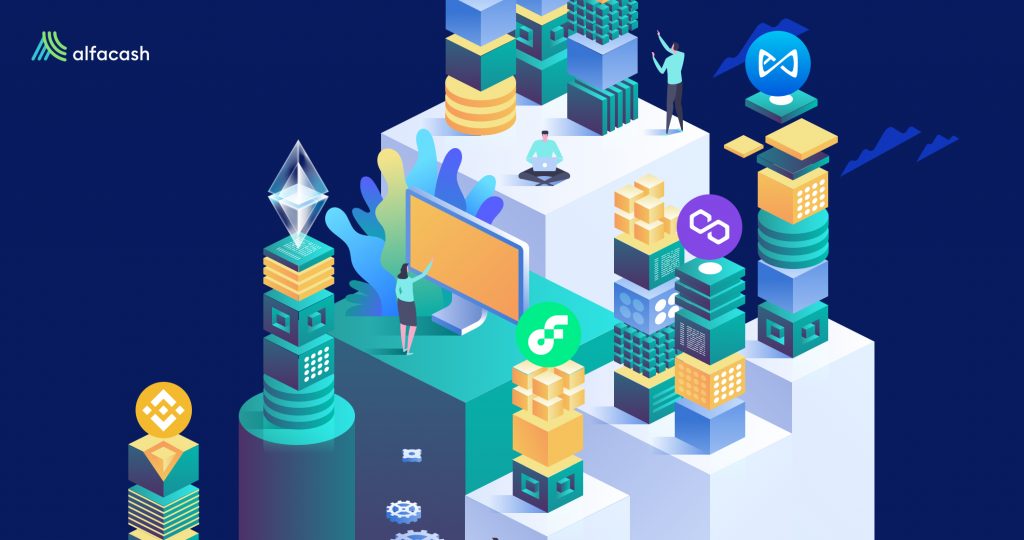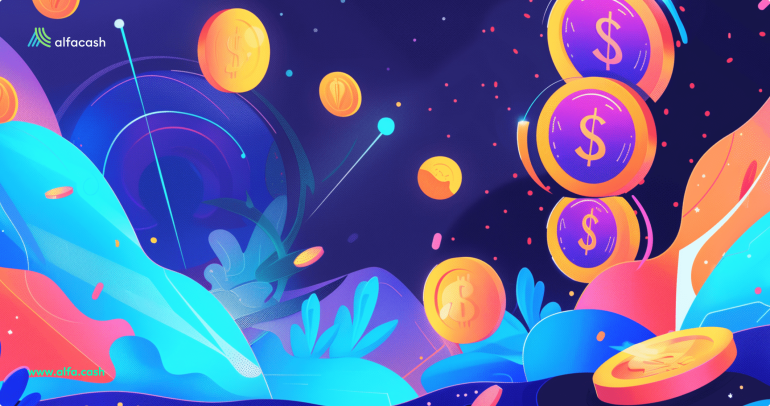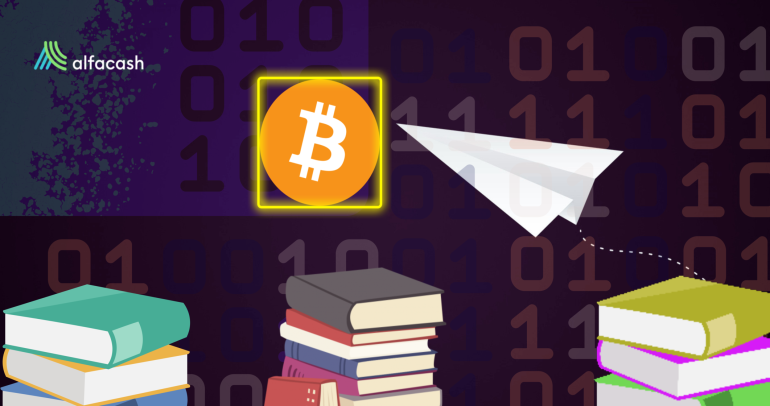You’re here now, so, you’ve probably already used a Dapp —without even noticing it. And that’s the point. A Dapp (Decentralized Application) in Crypto is just like it sounds: a digital application (of whatever function or topic) but decentralized. That means it’s not controlled by any company, organization, or individual. Instead, it fully belongs to the users.
How’s that even possible? By using a blockchain platform and smart contracts, of course. A blockchain, as we may know, is an accounting ledger in a digital-encrypted version. This complex cryptographic system is usually the backbone of its own cryptocurrency, like Bitcoin (BTC) or Ethereum (ETH). It’s also the canvas on which smart contracts can be written.

Smart contracts are digital agreements based on a blockchain, written with computational code to enforce previously agreed conditions by two or more parties. You can think of it as an automatic contract or warranty, that doesn’t need any paper, lawyer, notary, or middlemen in general. Only the code.
Therefore, Dapps don’t need all those parties either. The code and their community are enough. To make decisions about updates or changes, or even to deliver rewards, the ownership of the Dapp is diluted and distributed among all its users by issuing its own utility and/or governance tokens. This way, centralization and censorship are avoided.
Cryptocurrencies like Bitcoin or Ethereum can be considered Dapps by themselves. However, the term “Dapp” usually refers to second-layer platforms beyond mere payments, which means tools built on top of another blockchain. They can also have their own chains, though.
Apps vs. Crypto Dapps
Let’s work with a brief example here. You surely know what a traditional app is, right? You must have a lot of them only on your phone: Internet browsers, music players, bank tools, sticky notes, etc. If you look behind them, sure there’s some organization, company, or individual owning and handling that app.
Your bank app, for instance, is controlled by your bank —as much as your financial account there. They set up the rules and changes of that digital product, without involving the final users. Now, let’s check a popular Dapp: Lido DAO. This platform offers to make liquid staking for its users —a way to earn passive income with cryptos.

It was released in December 2020 by a group of venture capital companies and angel investors. But they don’t have full control of the app because it’s open source, and it was written on smart contracts. That means everyone can copy, modify, and audit the original code. In this case, on the platform GitHub. If you like, at this moment, can go check the code, all their previous changes, and all the developers involved.
Anyone can become a node operator on Lido if they meet the requirements. Besides, Lido issued its own governance token (LDO) to distribute the Dapp control among its users. By using LDO, community members can vote over the changes and future of the platform. The more LDO tokens they own, the more voting power they have. Before these votes, the community can make proposals and offer ideas on their Research Forum.
In addition, LDO has its own real value, as much as other Dapps’ governance tokens. It’s currently traded at $1.8 —an increase of 260% in the last three months [CMC]. So, the governance tokens can also be an investment by themselves.
Pros & Cons of Crypto Dapps
As the Ethereum Foundation explains, there are mainly five great advantages of Crypto Dapps: zero downtime, privacy, resistance to censorship, complete data integrity, and trustless computation. In other words, a Dapp is always available for its users (zero downtime), who don’t need to provide any personal data (intimité). Besides, no company, individual, or organization can block transactions (resistance to censorship) or forge them (complete data integrity).

Finally, we have what it’s probably the most important feature; what makes a Dapp, a Dapp: trustless computation. As it reads:
“Smart contracts can be analyzed and are guaranteed to execute in predictable ways, without the need to trust a central authority. This is not true in traditional models; for example, when we use online banking systems, we must trust that financial institutions will not misuse our financial data, tamper with records, or get hacked.”
Nobody can control a Crypto Dapp, only its own users and developers.
Some cons
Of course, everything has its downsides. The Ethereum Foundation describes five cons of Dapps: maintenance, performance overhead, network congestion, user experience, and mild centralization. The first item has to do with complete data integrity because everything registered on the blockchain is difficult to modify. So, applying changes like updates or fixes may be difficult for the developer team as well.

The performance overhead and network congestion have to do with scalability, i.e., the ability to grow without issues. That heavily depends on the blockchain, but it’s believed that the more users, the more issues, and possible congestion may appear. Ethereum, for example, has suffered this many times before, slowing transactions and rising fees. The developers hope to solve this with The Merge that just passed.
User experience and centralization are also connected. Raw-form Dapps can be difficult to understand by average users. That’s why developers may reach centralized services looking for user-friendly interfaces and features, sacrificing some décentralisation this way. It’s not always the case, though.
How to earn money with Dapps and Crypto?
That’s an interesting question, isn’t it? We already mentioned a way above: buying governance tokens —after doing your own research (DYOR), of course. As with everything in Crypto, this also has its risks. The coin can go up with time, or it can plummet as well. That happened with Terre (LUNA) this year.
Beyond that, we must consider that there are Crypto Dapps in many different categories, not all of them financial. There are Dapps offering games, marketplaces, music tools, social media, gambling, health, insurance, storage, wallets, security, Metaverses, Non-Fungible Tokens (NFT), identity, energy, and much more. Not every Dapp is designed to earn money. Its main functions can be something entirely different.

On the other hand, indeed, we have Dapps designed to earn money. This group is identified as the Decentralized Finance (DeFi) sector. You can describe “DeFi” as a whole industry made of decentralized apps and tokens focused on offering a long list of traditional financial tools and new products, but without a company, government, or organization behind them.
Financial services like extraction de liquidité (depositing tokens to provide liquidity and earn rewards), cryptocurrency loans, or liquid staking (like Lido DAO) are available as Dapps. To use them, it’s necessary to own the native coin of the smart contract blockchain (usually Ethereum, Solana, EOS, etc.), pay the needed transaction fees, and invest tokens on certain platforms. Web3 wallets like MetaMask, imToken, and Trust Wallet support the use of different Dapps.
Some remarkable Dapps
We can say that the most popular Dapps in Crypto belong to the DeFi and Games industries. According to DappRadar, the top ten by monthly users (at the time of writing) goes as follows:
- PancakeSwap (BNB Chain / Liquidity Mining) — 1.75 million users
- Gameta (Solana and BNB / Games) — 1.08 million users
- Alien Worlds (WAX and BNB / Games) — 760.09k users
- Solitaire Blitz (Flow — Games) — 667.4k users
- AtomicAssets (WAX and EOS / NFTs) — 651.38k users
- Trickshot Blitz (Flow / Games) — 512.02k users
- Sweat Wallet (ETH and NEAR / Games) — 438.79k users
- Axie Infini (Ronin and ETH / Games) — 358.66k users
- Splinterlands (Hive and WAX / Games) — 322.24k users
- OpenSea (ETH, Polygon, and Solana / NFTs) — 297.99k users
However, this is only the beginning. There are over 12,200 Dapps in over 50 blockchains, covering numerous categories. In the future, we can even see much more, since this ecosystem is always developing new products.
Wanna trade ETH, BTC, BNB, and other tokens? You can do it sans encombre sur Alfacash! Et n'oubliez pas que nous parlons de cela et de bien d'autres choses sur nos réseaux sociaux.
Télégramme * Facebook * Instagram * Youtube *Twitter








